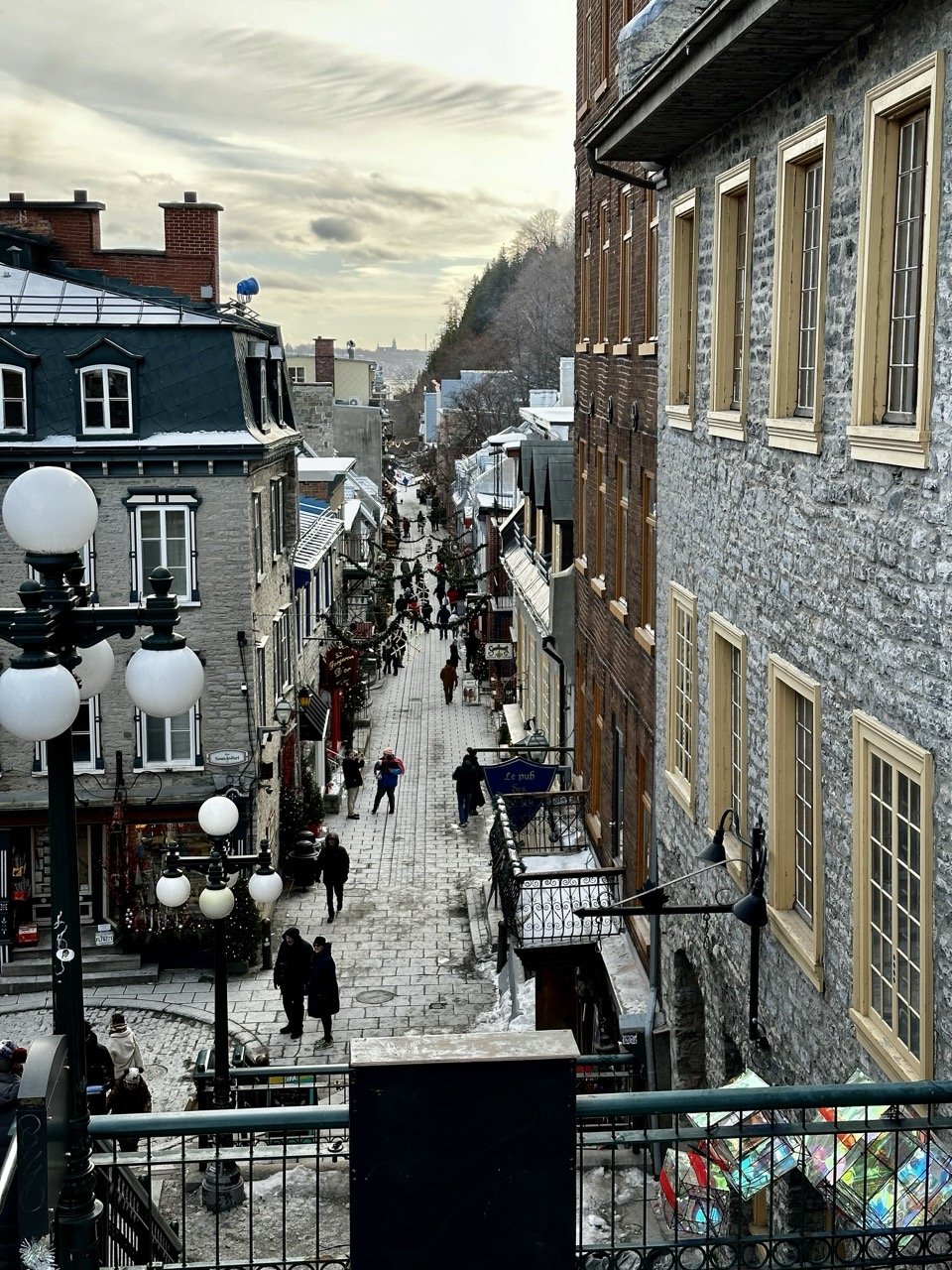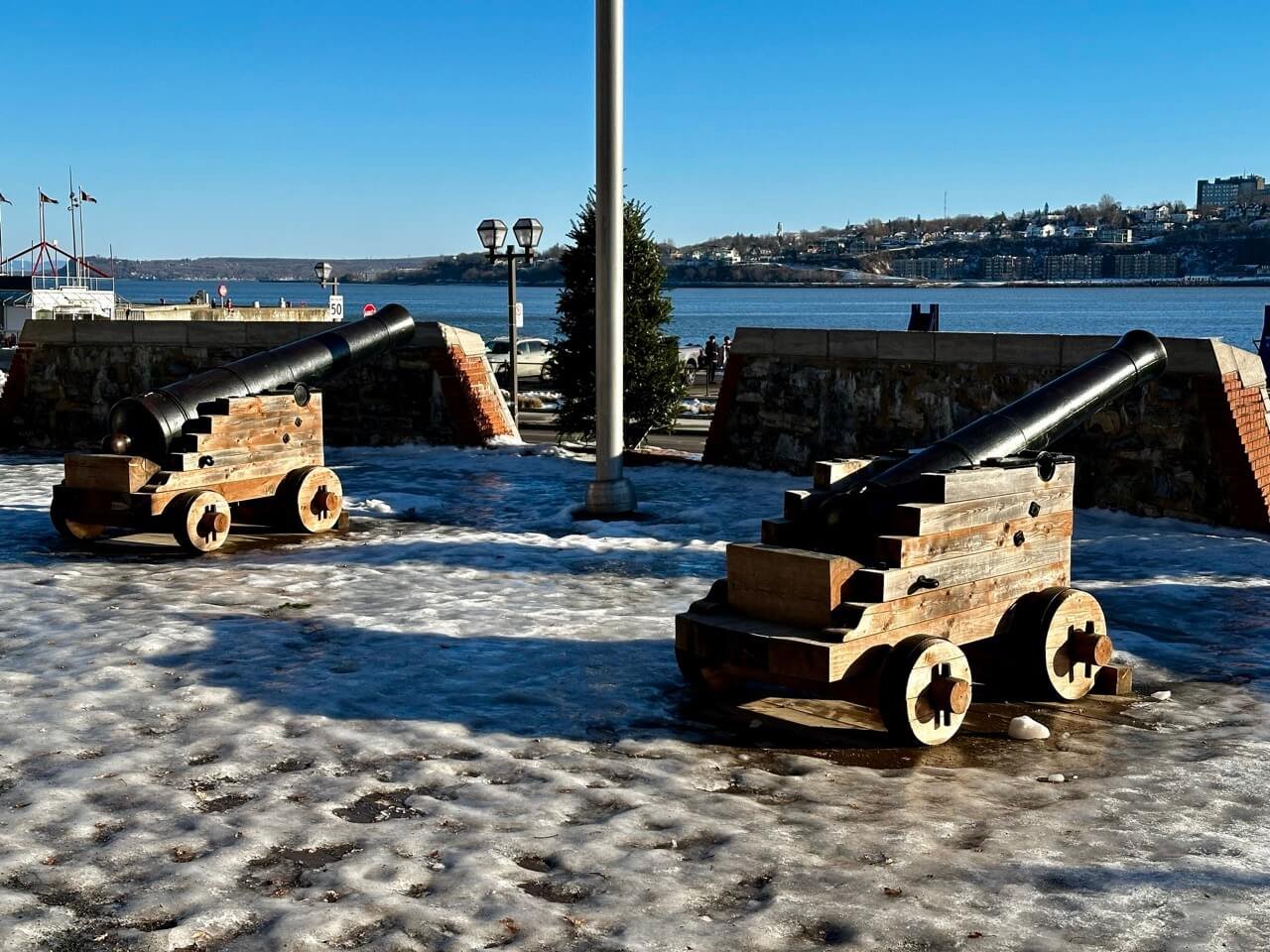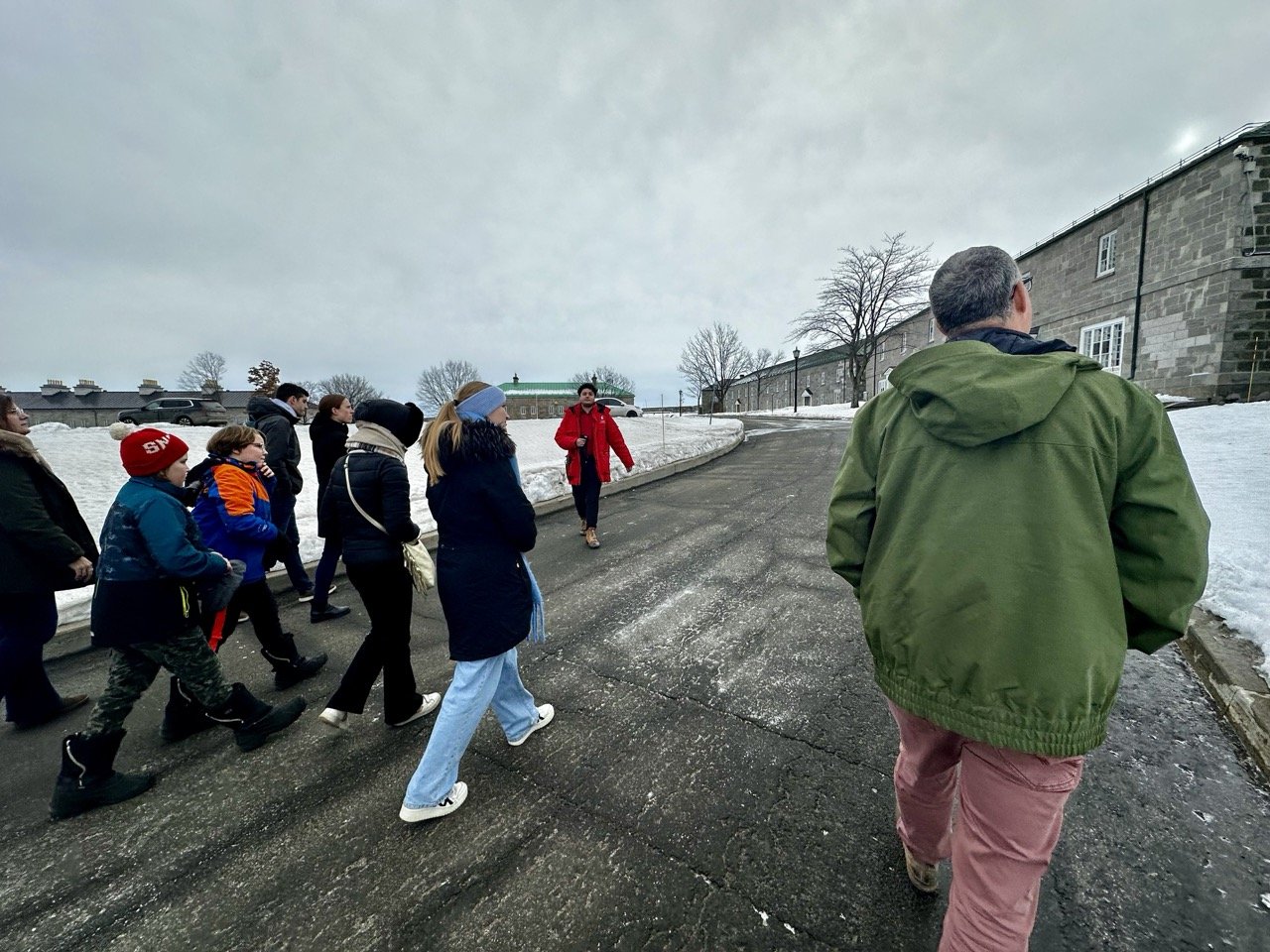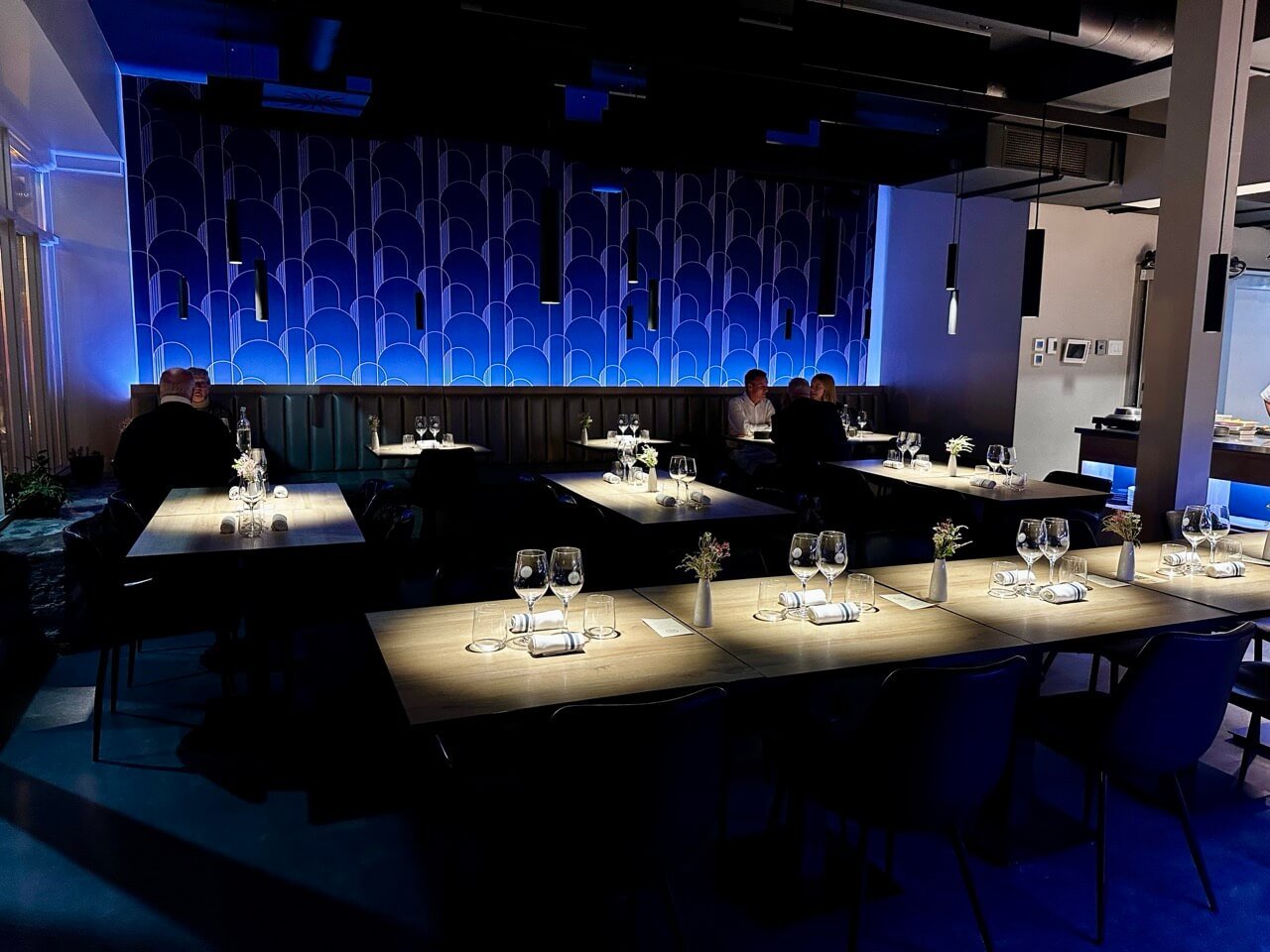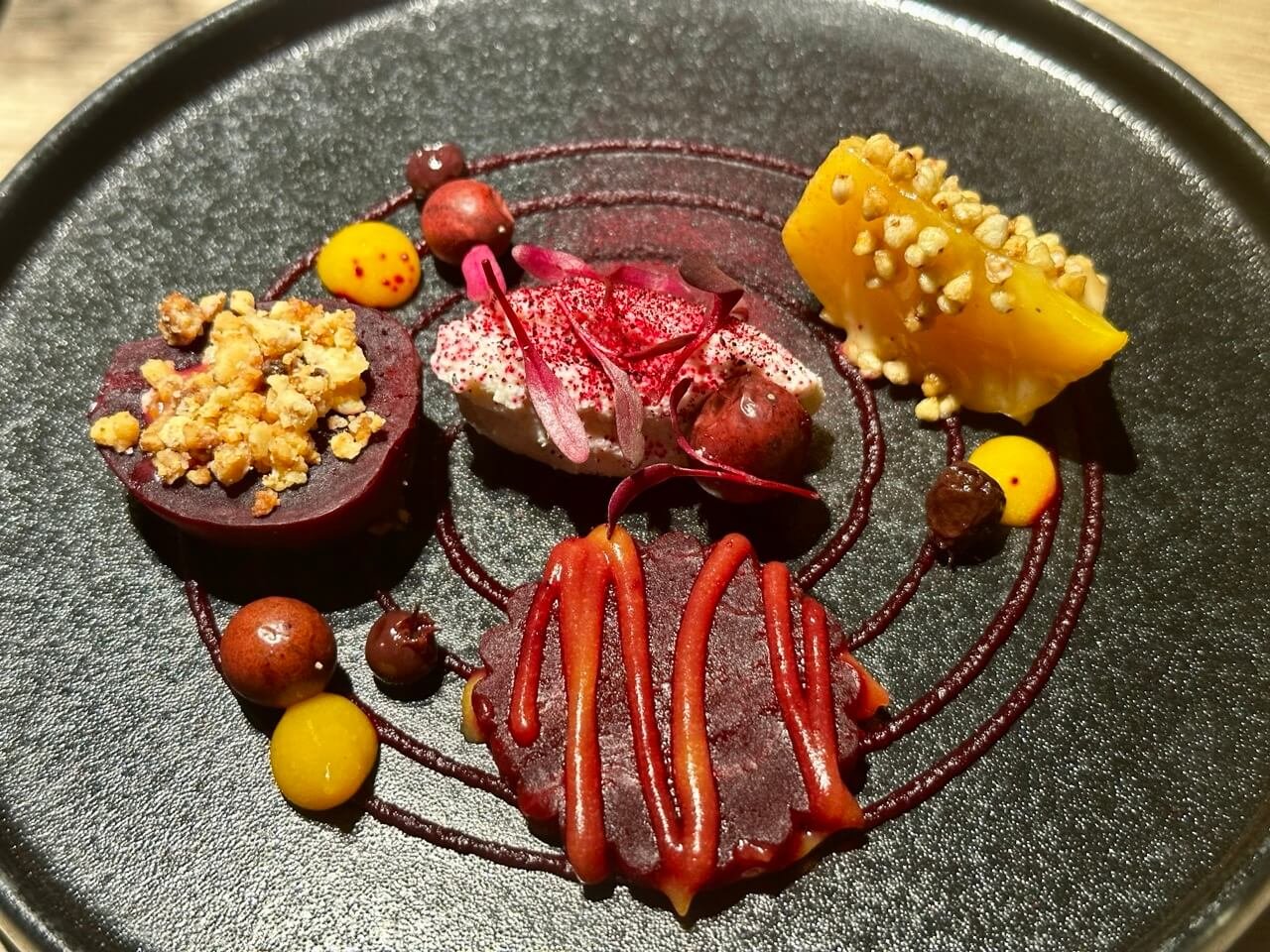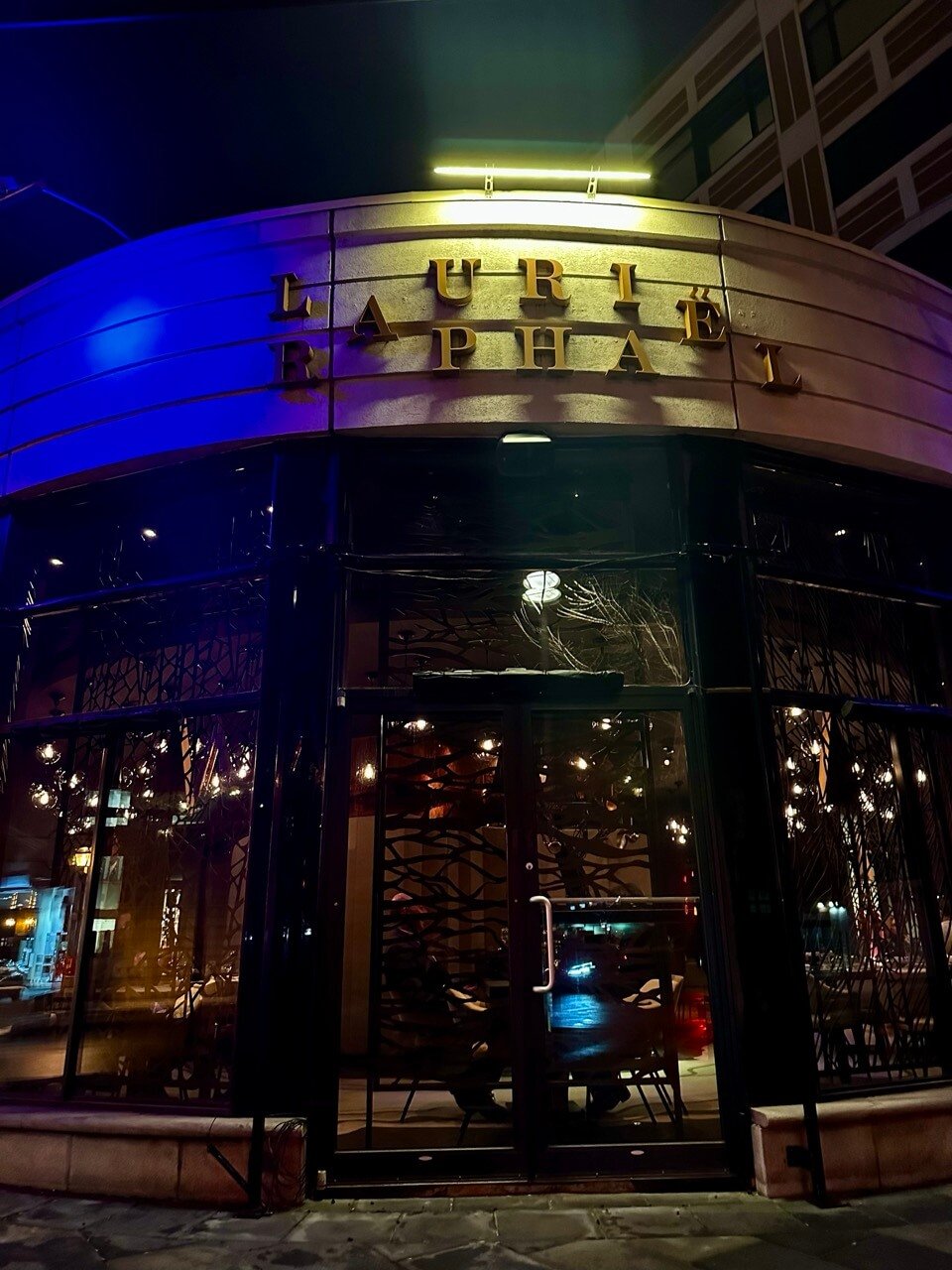Exploring Quebec City in Winter: Embrace The Season in This Winter Wonderland
Quebec City is regularly in the conversation as one of Canada’s most beautiful cities, but it can honestly be in the running for one of the world’s most beautiful. In the colder months, this is a winter wonderland like no other, a city that truly embraces the wonders of the season. Here’s a comprehensive guide to making the most of Quebec City in winter.
Quartier Petit Champlain.
As many longtime readers will know, a lot of what I’ve been trying to do as of late is to explore my own nation, Canada, in-depth. When I was younger, I galavanted around the globe, but often neglected to realize that some of the stories, sights, and history of my homeland matched anything that I’d find across the ocean, and it’s hard to think of a case where that’s more true than Quebec City.
People often talk about Quebec City being “Canada’s most beautiful city,” and it would be hard for me to argue with that but, to me, that’s a very narrow way of appreciating Quebec’s capital. It also has to be in consideration as one of the most interesting cities in the nation as well, especially since it has a history literally like no other. This is one of the oldest European settlements in North America, after all, and the only fortified city north of Mexico with walls still intact.
Even that doesn’t paint a full picture. The food scene here is off-the-charts, the access to the pristine outdoors is remarkable, and perhaps most importantly — Quebec City is so much more than its old town.
The biggest mistake that visitors make when coming to Quebec City is thinking that they can knock off all the major tourist sites with a short walk around the city’s condensed central area, highlighted by the Old Town. This needs to be on your to-do list, of course, but I’m here to yell from the rooftops that it’s also about getting away from the core of the city and strolling up and down Saint Joseph, visiting museums outside the core, or perhaps appreciating the giant lampshades on Cartier Avenue.
This is a city that deserves more than just a quick visit, plain and simple.
Winter in particular is a special time of year for one of Canada’s largest and most esteemed cities. This is a place where winter is embraced. And why not, right? As I always like to say, “memories don’t get cold,” so it’s always worth it to dress for the weather and then embrace your surroundings.
In this case, a true winter wonderland.
Please note that this post contains affiliate links. Simply put, this means we may receive a small commission for sharing some of our heartfelt and honest recommendations, at zero additional cost to you.
A Bit More About Quebec City
Views of the Chateau Frontenac from Lower Town.
You don’t want to come to Quebec City without having a basic understanding of its true significance, so let me run through a very brief historical review with you before you head here.
Quebec City, founded in 1608 by Samuel de Champlain, is one of North America's oldest cities. It became a focal point (and perhaps the focal point) for French exploration and colonization in Canada. The city played a significant role in the fur trade and was a key hub in New France's territory.
As every Canadian learned during their schooling days, throughout the 17th and 18th centuries, Quebec City was a battleground between the French and British forces vying for control over the region. The British successfully conquered Quebec City in 1759 after the pivotal Battle of the Plains of Abraham (which you can visit when you come here). The subsequent Treaty of Paris in 1763 officially transferred Quebec City and New France to British rule.
Though under British control, we should all be very grateful that policies like the Quebec Act of 1774 still granted freedom to the people of the city from a religious, cultural and legislative perspective. Obviously, it wasn’t all easy days, but French culture was able to survive and, eventually, to thrive.
When Canada is at its best, we recognize that diversity is our strength, and I’m grateful that I feel the desire to practice my French and be a part of a truly different culture in Quebec City.
Canada isn’t a “melting pot,” it’s a cultural mosaic.
When I was visiting, people were often commenting on social media about how “European it feels.” Honestly, that feels lazy to me. It feels like Quebec City - a totally unique blend of cultural and historical inputs and outputs that have led to the wonderful place we have the pleasure of visiting today.
In the 19th century, Quebec City became part of the Dominion of Canada (1867 is the date there, of course). The city became a crucial port, centre for defence, and industrial powerhouse in a lot of ways. In the 20th century, the world began to see what many who lived there already knew - that this was a place of immense historical and architectural significance. That was fully recognized when, in 1985, Quebec City (and in particular the Old Town) was designated as a UNESCO World Heritage Site.
Today, Quebec City serves as a valuable window into the past, and it demonstrates how heritage can be preserved while a city moves firmly into the future. It’s an important symbol of French culture for our nation, and a place that every Canadian (and, honestly, traveller) should have on their bucket-list — largely because there’s nowhere else like it.
How to Make the Most of Winter in Quebec City
There are a lot of ways to enjoy Quebec City, especially in winter. Here are some of my favourites!
Rip Down the au 1884 Toboggan Slide
Can three men go on one toboggan slide and end of screaming down the hill as they cruise past the beautifully lit up Chateau Frontenac? Kevin, Patrick (from Destination Québec Cité) and I can answer that question with a resounding yes.
This is an experience that brings you back in time. The toboggan slide was established all the way back in 1884, and you can imagine that, except for some added safety features, the experience is much the same as it was back then — including the traditional wooden toboggans.
Make no mistake either, you can get some serious speed on these toboggans, and the views from the top (and all the way down) are unforgettable.
The Au 1884 toboggan slide offers a nostalgic glimpse into Quebec City's past and the winter activities enjoyed by its residents for generations.
Embrace a Fat Biking Adventure in Quebec City with tuque & Bicycle
Kev learning about Old Quebec on our Tuque & Bicycle tour.
Firstly, I want to mention here how impressed we were with the founder of Tuque & Bicycle, Émilie Pelletier. She’s just in her early 20s, but she’s as ambitious as they come, and in December 2020, she started this company with 12 fat bikes and a dream, and today, they have over 70 fat bikes and are full steam ahead.
She wanted to enable people to “move and discover Quebec differently,” and to “discover parts of the city that may not be accessible by walking or driving.”
We took part in the Winter Guided Fat Biking Adventure in Old Quebec and Beyond. The tour lasts 3 hours, and this enabled us to get our history fix in Old Quebec with our guide, then to head off and bike in neighbourhoods, in parks, and at venues we may not have come across otherwise.
We cruised along the Rivière Saint-Charles, explored neighbourhoods like Limolou, and spent some time warming up and grabbing a bite and a coffee at Le Grand Marché de Québec. Our guide was incredible in letting our interests guide our tour, which I know Kev and I both loved.
That’s part of the reason we spent so much time around Le Grand Marchè, since the hockey arena was right there, and outside that was an incredible display honouring the heritage of the Quebec Nordiques. This area is often called ExpoCité, and it’s a perfect place to come via bike, then to see a different side of Quebec City.
There’s some value to the notion that a good traveller will try to find time to go where the locals are, and this market, these parks, and those neighbourhoods were precisely that.
Here’s more information about our tour if you’d like to look at availability, and potentially book a tour during your visit.
Make Time for the Marché de Noël Allemand (QUebec City German Christmas Market)
Kev and I appreciating the wonders of the Marché de Noël Allemand in Quebec City.
I’ve never in my life seen a Christmas Market that manages to envelop the core of a city like the Marché de Noël Allemand does. As Kevin and I quickly learned, it’s a winter travel photographer’s dream come true. It is all just so, so impressive.
The market typically gets rolling in early December, and then the fun begins. Inspired by the traditional Christmas markets found in Germany, this event features wooden kiosks adorned with beautiful holiday decorations and an array of charming lights.
Local artisans and vendors sell a variety of goods, including handmade crafts, Christmas ornaments, traditional German foods like sausages and pretzels, sweets, mulled wine (glühwein), and other seasonal delights.
There are live music performances, activities for families and kids (storytelling, visits with Santa etc.), and it honestly looks as if Quebec City itself got dressed up for the holiday season.
This is my new favourite Christmas market in North America, without a doubt. I’m still in awe with what the team that puts this together was able to pull off.
Kev put together a full guide to Christmas markets in Quebec City that you can find here.
Enjoy the Wonders of Old QUebec
When we’re talking about “Old Quebec,” we’re talking about an urban area of about 135 hectares, which is made up of two parts that are named rather appropriately. As UNESCO notes, the split includes “the Upper Town, sitting atop Cap Diamant and defended by fortified ramparts, a citadel, and other defensive works, and the Lower Town, which grew up around Place Royale and the harbour.”
You’ll note here that you’ll see some other activities here which are technically a part of Old Quebec (part of the Christmas Market, for example), but it’s important to do a full exploration. Here are some of the highlights:
Walk through narrow cobblestone streets like Rue du Petit-Champlain and Rue Saint-Jean, lined with boutiques, restaurants, and historic buildings.
Explore truly iconic landmarks like the Château Frontenac, one of the most beautiful hotels on the planet, then set eyes on Place Royale, where Samuel de Champlain founded Quebec City, and Notre-Dame-des-Victoires, a picturesque church which started construction in 1687 and was completed in 1723, making it one of the oldest in North America.
You’ll want to also make time to visit the Cathedral-Basilica of Notre-Dame de Québec, the oldest church in Canada, and the first church in Canada to be elevated to the rank of a minor basilica.
For the photographer’s out there, you’re going to no shortage of material to work with, but for sure you should snap some shots at the Dufferin Terrace, which will give you the best views of the St. Lawrence River as well as Lower Town, and the iconic “Breakneck Steps / Escalier Casse-Cou,” which formally connect Upper and Lower Town.
Generally speaking, you can have some targets for things that you’re looking to set eyes upon, but the best thing to do is have a framework, and then get a little lost. Stop into different shops and cafes, and let your interests guide you.
I personally enjoy exploring on my own, often with a little music in my ear, but if you’d prefer to do a tour, I’d recommend this Old Quebec City: 2-Hour Grand Walking Tour.
Do a Tour of La Citadelle de Quebec
This historic military fortress is located atop Cap Diamant, and it overlooks the city, while also being one of the most iconic landmarks the city has to offer.
Construction of the Citadelle began in the early 19th century, following the War of 1812 when there were concerns about a potential American invasion. Its primary purpose was to fortify the city against possible attacks from the United States.
Designed as a star-shaped fortress following European military architecture, the Citadelle features impressive defensive walls, bastions, and a series of buildings within its walls. It became a crucial military installation for the British and Canadian forces.
Today, the Citadelle remains an active military base for the Canadian Armed Forces and serves as the official residence of the Governor General of Canada in Quebec. Since it’s an active base, you need to visit through a guided tour. You can look at available times here.
I’d recommend arriving 30 minutes early so you can browse through the museum on-site and get some context for your visit. In the summer months, you’ll have more of an opportunity to see changing of the guards ceremonies and soldiers dressed in historic uniforms, but it’s neat to visit in the winter because you feel like you have the place to yourself. The views over the city also feel extra dramatic, in my humble opinion.
Take a Break From the Cold at Strom Spa
I was visiting Quebec City with my right hand man, Kevin, who I run Ultimate Ontario & We Explore Canada with. After a long day of exploration, we decided that it was time to trade exploration for relaxation, and headed to Strom Spa.
The amenities and therapeutic experiences are lovely, but the real draw, I felt, was that it was an ideal vantage point to watch the St. Lawrence River flow on by. We sipped on herbal teas and did just that (in our bathrobes, of course).
If you’re visiting Quebec City with a partner, this is a lovely way to spend an afternoon. In my case, it was my business partner, but ultimately Kev and I relished the chance to break up our busy schedule, put away our phones, and navigate our way through the hot and cold tubs, variety of saunas and stream rooms, and spending some time in North America’s largest flotation bath.
Go Skating at Place d’youville
Talk about a historic place to lace of the skates…
Skating at Place d'Youville in Quebec City is a wonderful winter activity that allows locals and visitors to enjoy the season's magic in a picturesque setting. Place d'Youville transforms into an outdoor skating rink during the colder months, typically from December to March, weather permitting.
Visitors can bring there own skates, or if you can rent some skates for you and the whole family. Part of what makes this special is that you’re only steps away from a section of the Christmas market, and you’re surrounded by the historic buildings and charm of the city.
The atmosphere is often lively, especially during evenings and weekends, with music playing and a cheerful ambiance that captures the spirit of winter in Quebec City. It's a great way to embrace the season, enjoy the outdoors, and to create some lasting memories.
This activity in particular (along with tobogganing) just feels to me like such a clear way you can demonstrate that you’re not going to let the cold prevent you from having a ball. In fact, it’s because of the cold!
Set Eyes on the Stunning Parliament Building
l'Hôtel du Parlement at night.
You’ll know when you’re walking past The Parliament Building, known as l'Hôtel du Parlement, in Quebec City because it exudes historical importance. It serves as the seat of the Quebec National Assembly and is an iconic symbol of Quebec's political life and heritage.
It was constructed in the 19th century, and is adorned with intricate stone carvings, sculptures, and elegant facades that showcase Quebec's history and culture. Its central tower, topped with a gold-plated statue of Samuel de Champlain, is a distinctive feature visible from various parts of the city.
I’d recommend getting photos of the Parliament Building at day and night, as it’s lit up to perfection. For those looking to dive into the history, you can find out more information about their 60 minute guided tours, offered in both English and French, here.
Walk on the Plains of Abraham
The Plains of Abraham, as I mentioned above, are a place of incredible historical significance in Canada. This location is in every Canadian history book taught in any school, of that I’m sure. In short, it was the site of a pivotal battle in 1759 during the Seven Years' War between the British and French forces.
Today, it’s an urban park with plenty of space for walking, picnics, lovely views of the St. Lawrence, as well as historical monuments and interpretive centres to provide context to the site.
It’s located just outside the walls of Old Quebec.
GO Neighbourhood Hopping
Once you’ve got a good grasp on the Old Town, head outside the walls. At the very least, I’d say these neighbourhoods are worth having on your radar.
The giant floating lampshades you’ll find on Cartier Avenue in the Montcalm neighbourhood.
Saint-Roch: This vibrant district is known for its creative scene, trendy cafes, boutiques, and art galleries. As Quebec Cité has noted on their site, “Like Griffintown in Montreal or Williamsburg in Brooklyn, within a few years, Saint-Roch went from a working-class neighbourhood to the place to be.” It’s technically located in the city’s Lower Town, but outside the city walls. I could walk up and down Rue Saint-Joseph all day!
Saint-Jean-Baptiste: Adjacent to the Old Town, this area is characterized by its historic architecture, lively atmosphere, and eclectic mix of shops, restaurants, and bars. It's a hub for artists, musicians, and young professionals. It’s a lot of fun, and is known for Rue Saint-Jean, the main shopping street that runs through the neighbourhood.
Limoilou: This up-and-coming neighbourhood exudes a cozy, local feel. Visitors can explore its tree-lined streets, community parks, and the charming Rue 3e Avenue with its boutiques, cafes, and eateries. If I moved to Quebec City, I feel like this is an area I would want to target to base myself in, as it just feels very young and exciting.
Montcalm: Known for its upscale vibe, Montcalm features elegant Victorian-style houses, tree-lined boulevards, and the historic Plains of Abraham. It also offers theaters, chic restaurants, and boutiques along Grande Allée. This is where you’ll find the giant lampshades on Cartier Avenue, which I’d put in the “can’t miss” category.
Sillery: Offering a more residential feel, Sillery boasts historic mansions, green spaces like the Bois-de-Coulonge Park, and the Valero Promenade, a scenic riverside walkway.
Stay Somewhere Interesting
If you’ve got a little budget to work with, then I’d recommend staying in the heart of the action at the Fairmont Chateau Frontenac. With its grandiose architecture reminiscent of a French château, this historic hotel has been a landmark in Canada's capital since its opening in 1912. It’s old world charm at its finest, but of course updated with modern amenities.
Kev and I went for a bit of a different approach when we stayed there at Hôtel Atypiq. It’s basically hostel meets hotel, and offers one of the more innovative set-ups that I’ve seen when it comes to accommodation. The bed can actually be lifted up and down to create an area to do some work, and it’s compact and relatively tight quarters, but it was fascinating to see their approach to making the best use of space. It’s also a cost-effective option.
The main breakfast area and rooftop area where you can roast marshmallows didn’t hurt either!
Visit Some of Quebec City’s Best Museums
If you’ve come to appreciate the winter wonder of Quebec City, but perhaps a blizzard has arrived, then you can always look indoors and visit a few of the city’s museums.
I loved my visit to the Musée national des beaux-arts du Québec (MNBAQ). It showcases a vast collection of Quebec art, Canadian art, and international works. The exhibits are intriguing and thought provoking, and I imagine I’ll probably pop by the MNBAQ anytime I’m in the city to see what they have on.
Kev and I also popped by the Observatoire de la Capitale, and it’s not a traditional “museum” per se, but it is a place to get some excellent views and do a little learning about the city.
The Musée national des beaux-arts du Québec (MNBAQ).
The top choice for many, especially families, is the Musée de la civilisation. This museum focuses on the history and culture of Quebec and offers engaging exhibits exploring various aspects of society, from indigenous history to contemporary culture.
In the heart of Old Quebec, you’ll also find the Musée de l'Amérique francophone. This is a great spot to learn more about Quebec’s culture, and the overarching history and presence of French peoples in the Americas. It looks at language, art, and everything in between.
Appreciate Quebec City’s Remarkable Culinary Scene
If there’s one thing that I didn’t fully appreciate before my most recent explorations of Quebec City, it’s how incredible the food scene is here. Kevin and I ate like kings while we were here, everything from hearty lunches to unforgettable feats of gastronomy at dinner.
I’ve eaten is some of the top restaurants in some of the world’s top cities, and this was honestly up there for me. Here’s a bit of a diverse list of recommendations, so you can experience a bit of everything.
Bistro Le Sam: The perfect excuse to visit the Fairmont Château Frontenac for a top-tier dining experience. Kev and I had lunch here, and enjoyed some breathtaking views of the St. Lawrence during our meal, along with some local beer. It’s a beautiful blend of French and Quebecois cuisine with excellent service to boot.
Le 101 Restaurant De Quartier: A truly exceptional dining experience. If you’ve got the time and the sense of adventure, I’d recommend the menu with 7 services (and 5 courses), paired with wine. The ambiance and service is in a world unto itself as well. Here’s what we had:
Foie gras, pain d'épices et marmelade (Foie gras, gingerbread and marmalade)
Betterave, chèvre et petits fruits (Beetroot, goat cheese and berries)
Saumon à l'oseille (Salmon with sorrel)
Joue de boeuf, avoine nu et champignons (Beef cheek, oats and mushrooms)
Soufflé aux agrumes (Citrus souffle)
La Buche: This would be the “fun” option on the list that isn’t necessarily upscale, but it sure is an experience. It serves the best of Quebecois cuisine in an approachable sort of way. Dishes like tourtière, poutine, and maple syrup-infused delicacies are served in a cozy ambiance with a touch of Quebecois heritage.
Restaurant Laurie Raphaël: Kevin and I both agreed that the meal we had here had to be in contention for one of the best of our lives. Words barely seem adequate to encapsulate the dining experience that we had here. It’s world-class cuisine at a restaurant that has to be in contention for Quebec City’s best.
We did the Gastronomic Experience with wine pairings, and each course was novel worthy. We started with a dish representing the St. Lawrence River (in this case smoked sturgeon), moved on to classics (poached foie gras), then veggies (a shiitake and potato étagé), roots (walleye fillet for the first course, and seared duck shortly thereafter), and finished everything off with aged cheddar espuma gougère and a spiced squash and rum baba. At the end, we enjoyed a glass of scotch and dessert in the lounge. This is on my Mount Rushmore for the best meals of my life, and I’m not exaggerating.
Le Bedeau: This place is serious about wine, exemplified by the fact that wine comes first on the menu. They also craft their small plates very much around their pairings, and they did an excellent job of it. The atmosphere was fun and intimate, and the interior almost reminded me of Frank Lloyd Wright style architecture. The dishes here were a little smaller than I would have liked to see, but delicious and inventive nonetheless.
Other top restaurant choices include Restaurant Le Saint-Amour, Chez Boulay - Bistro Boréal, and Kraken Cru.
Quebec City is the Perfect Winter Holiday
The Breakneck Steps / Escalier Casse-Cou in Old Quebec.
As I hope is now evident, Quebec City is a city that does not disappoint when it comes to winter. We often think about winter as this imposing force that urges everyone to head indoors and put bolts across their doors until spring, but that’s the wrong attitude to have.
Quebec City perfectly exemplifies what happens when we embrace the cold, and the adventure, and how to offer experiences to ensure that the city is packed with people, even on the coldest of days. The city is dressed for winter as well, so to speak, so it’s hard not to feel festive here, and validated over and over again for exploring, regardless of the season.
This city had been on my list for ages as a place that I was desperate to come and explore in more depth, and you can officially call me a huge fan. I love it here. And I don’t just love Old Quebec - I appreciate that this is a city with a historic core that rivals the best, but that the real wonder of the city is that there are so many moving pieces, so many different parts, which, when combined, forge a destination that can keep you busy for a full week without a problem and, dare I say, an entire lifetime.
I want to humbly thank Quebec Cite for hosting me as media. All opinions are my own.





